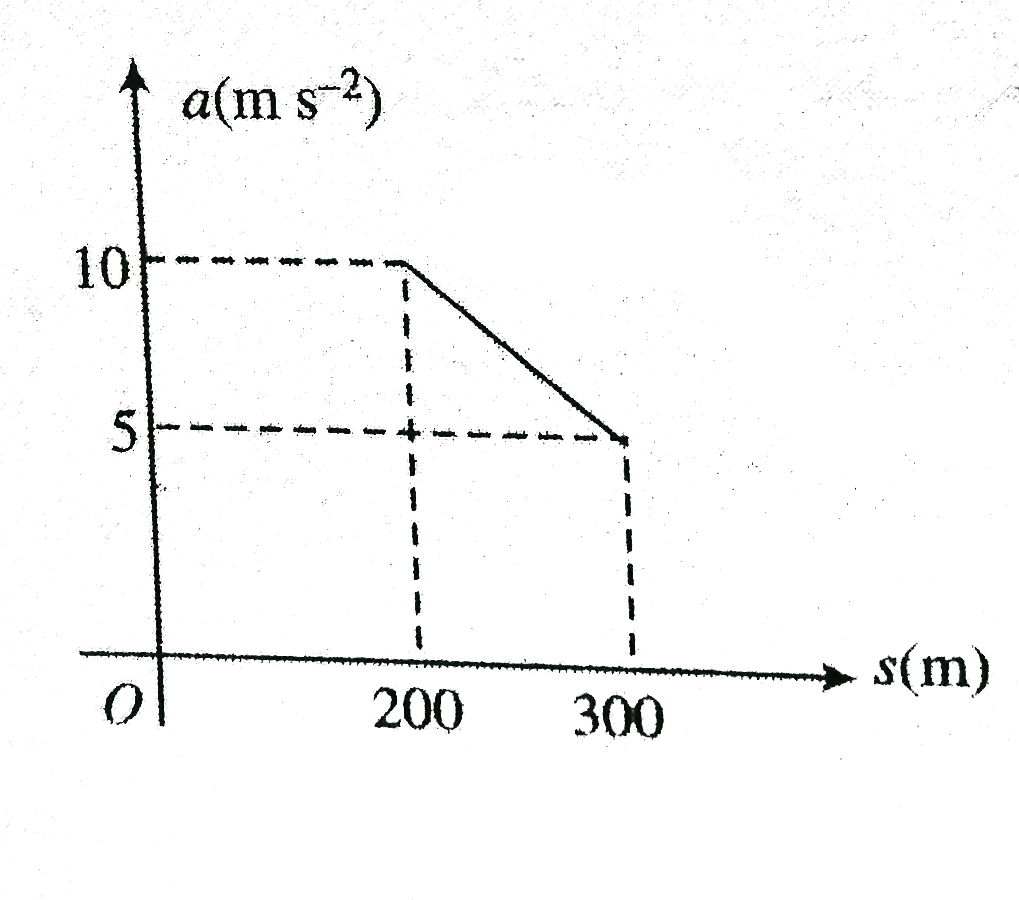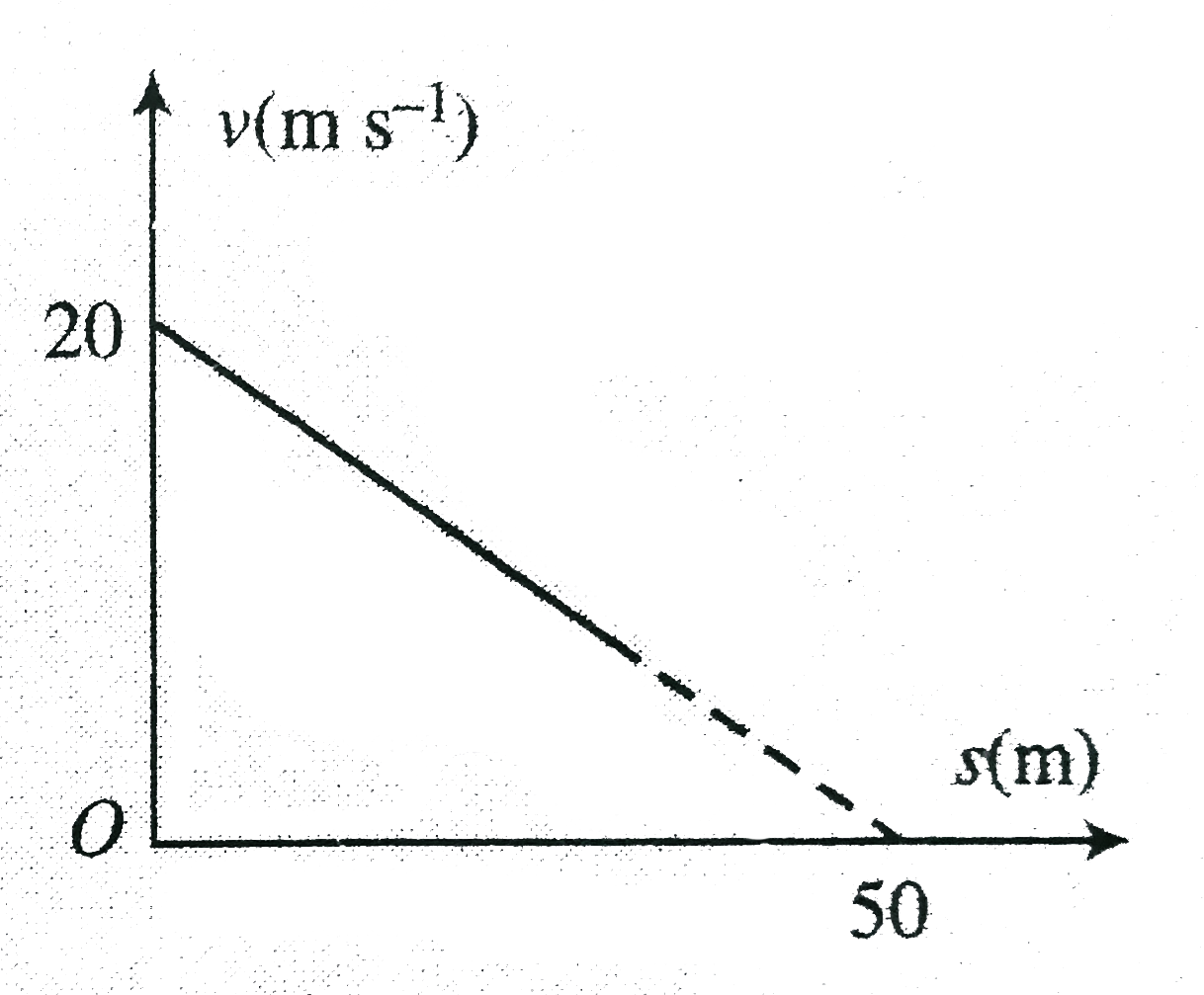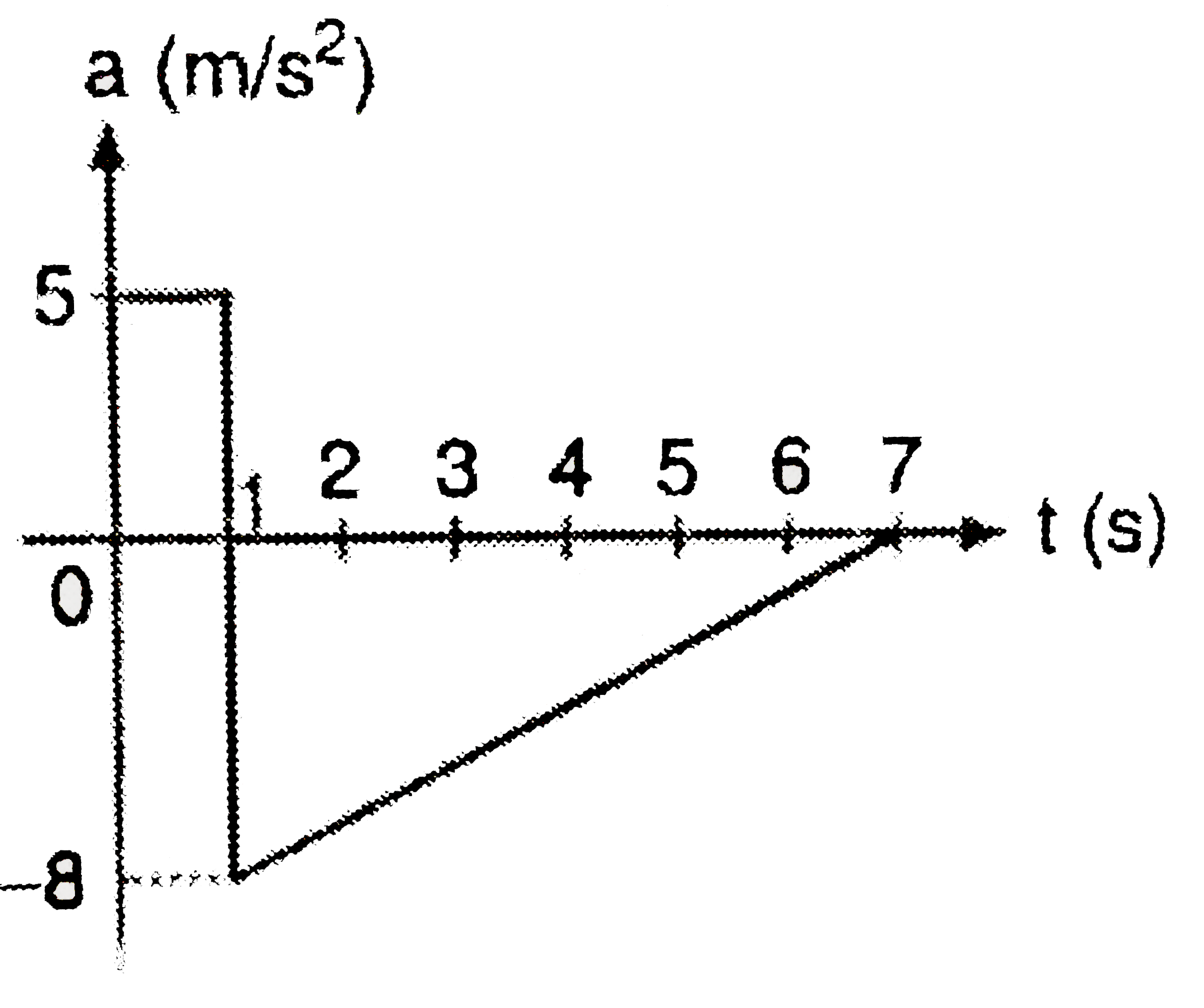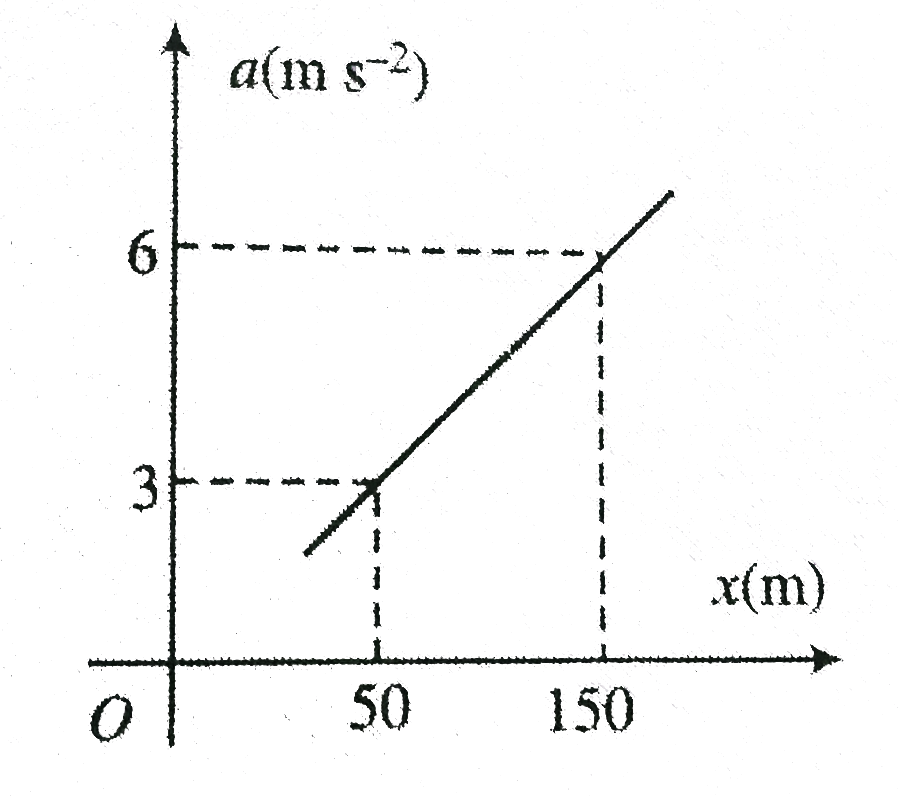Referring a−s diagram in , find the velocity after particle travel 120m from starting. Assume v0=0.
 .
.
a=−s20+200
v∫0vdv=250∫0(−s20+20)ds⇒v22=[−(s240+20)s]2500
v22=−(250)240+20×250
⇒v2=6875⇒v=25√11ms−1.
Topper's Solved these Questions
- BOOK - CENGAGE PHYSICSCHAPTER - KINEMATICS-1EXERCISE - Subjective29videos
KINEMATICS-1
- BOOK - CENGAGE PHYSICSCHAPTER - KINEMATICS-1EXERCISE - Single Correct52videos
KINEMATICS-1
- BOOK - CENGAGE PHYSICSCHAPTER - KINEMATICS-1EXERCISE - Exercise 4.315videos
KINEMATICS-1
- BOOK - CENGAGE PHYSICSCHAPTER - GRAVITATIONEXERCISE - INTEGER_TYPE1videos
GRAVITATION
- BOOK - CENGAGE PHYSICSCHAPTER - KINEMATICS-2EXERCISE - Exercise Integer9videos
KINEMATICS-2
Similar Questions
Knowledge Check
- Question 1 - Select One
The velocity of a particle moving with constant acceleration at an instant t0 is 10m/s After 5 seconds of that instant the velocity of the particle is 20m/s. The velocity at 3 second before t0 is:-
A12B1C2D4 - Question 2 - Select One
The diagram shows the displacement-time graph for a particle moving in a straight line. Find the average velocity for the interval from t=0 to t=5s.
 A−2ms−1B2ms−1C−4ms−1D4ms−1
A−2ms−1B2ms−1C−4ms−1D4ms−1 - Question 3 - Select One
The diagram shows the displacement-time graph for a particle moving in a straight line. Find the average velocity for the interval from t=0 to t=5s.
 A−2ms−1B2ms−1C−4ms−1D4ms−1
A−2ms−1B2ms−1C−4ms−1D4ms−1
Refering to v−s diagram, find:
 .
.
a. Acceleration of the particle when its velocity becomes half of the initial velocity.
b. Total distance covered by the particle.View SolutionA particle starts moving due east with a velocity V1=5 m/sec. for 10 sec, turns to north and moves with a velocity V2=10 m/sec. for 5 sec. Find the average velocity of the particle during 15 sec. from starting.
View SolutionA particle moves vertically with an upward initial speed v0=5m/s. If its acceleration varies with time as shwon in a−t graph in the fig. 4.30, find the velocity of the particle at t=7s.
 View Solution
View SolutionOn a rough horizontal x-y plane a body starts moving from origin with initial velocity (V0)ˆi. A constant force (F0)ˆj is always acting on the body. Kinetic friction on the body has magnitude F0. Find the magnitude (in m/s) of velocity of the particle when its direction makes an angle of 60∘ from y-axis. V0=12m/s, F0 = 10N, mass of body = 1kg.
View SolutionRefer Q.143. Starting from t=0, what is the displacement of the particle at the end of 8s ?
View Solution


 .
. .
.